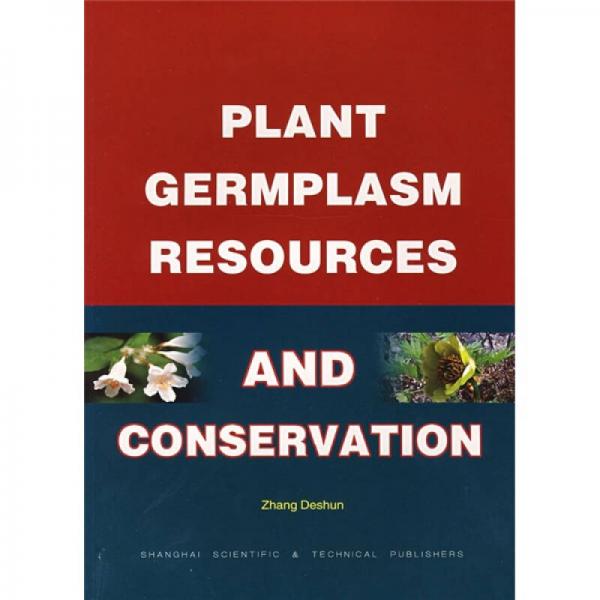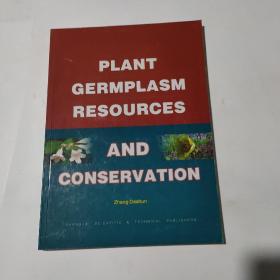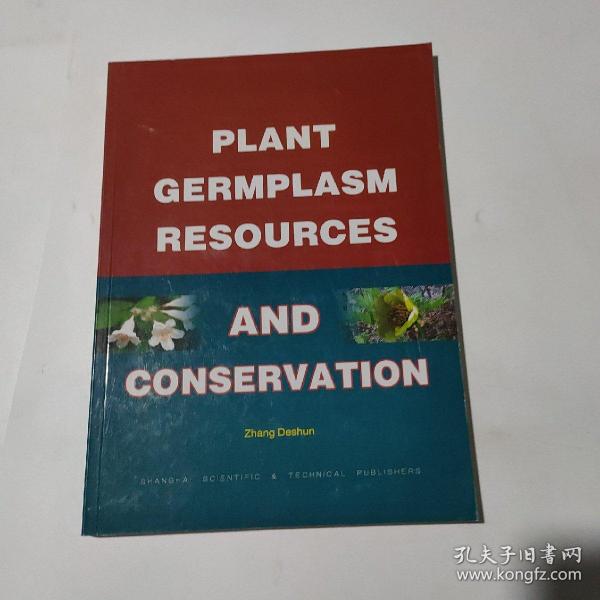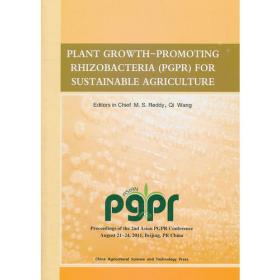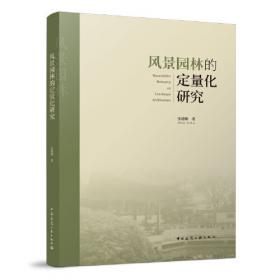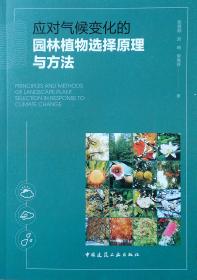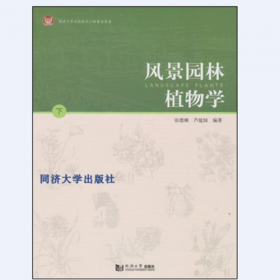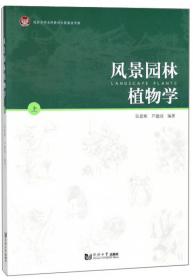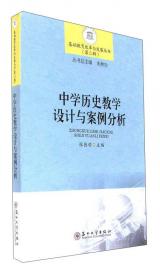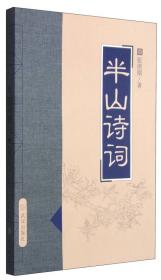PLANT GERMPLASM RESOURCES AND CONSERVATION
出版时间:
2007-11
版次:
1
ISBN:
9787532390427
定价:
55.00
装帧:
平装
开本:
32开
纸张:
胶版纸
页数:
177页
字数:
480千字
正文语种:
简体中文
-
WhenIwasauniversitystudent,Iwasextremelyinterestedinthescienceareaofplantgermplasmresources.Itisanintegrationofplanttaxonomy,origin,evolvement,survey,collection,conservation,evaluation,descriptionandutilization,etc.Onthebasisofknowledgeofbotany,phytophysiologyandplantgenetics,itoffersthebasictheoryforplantcultivation,plantbreeding,dendrology,floricultureandlandscapearchitecture.Duetotheirimportancetohumanneedsbothatpresentandinthefuture,plantgermplasmresourceswerelongbeenresearched.Theyareoneofthemostfundamentalandforemostearthresources.Theirimportancecouldbecategorizedintothefollowingaspects. chapter1investigationandanalysisofwildornamentalflowersinbeijingmountainarea
1.1surveyareaandmethods
1.1.1studysites
1.1.2studymethods
1.2descriptionofresearchsite
1.2.1geologyandphysiognomy
1.2.2climatesandhydrology
1.2.3plantsandvegetation
1.3resultandanalysis
1.3.1ecologicalfactorsthataffecttheflowersdistribution
1.3.2quantificationofecologicalfactors
1.3.3progressiveregression,themainecologicalfactorsthataffectedthedistributionofwildflowerswereselected
1.4possibilityofsuccessforwildflowersintroductiontourbanparks
1.4.1classificationoffactorsforselection
1.4.1.1speciesadaptability
1.4.1.2morphologicalcharacteristics
1.4.1.3reproductiveadaptations
1.4.2selectionoftypicaloccurrenceplottoflowers
1.4.3selectionofplantationsites
1.4.4classificationwithfussysimilarprecedenceratiomodel
1.4.4.1standardizationofprimarydata
1.4.4.2calculatetheeuclideandistancebetweentypicalplotxiandfixedplotxk
1.4.4.3calculatethesimilarprcedenceratio
1.4.4.4evaluatethesimilarlevelaccordingtotheinterceptioncollectionoffiduciallevelλfrombigtosmallinprioritymatrix
1.5selectionofsuitableplantationsiteforwildflowers
1.5.1siteselection
1.5.2datastandardization
1.6conclusionsandsuggestion
1.6.1richspeciesandlargenaturaldeposits
1.6.2variousflowertonesandattractiveflowercolours
1.6.3naturalbankofgermplasmresourcesforlandscapeplants
chapter2therareandendangeredplantconservationinchinesebotanicalgardens
2.1thevalueofrareandendangeredplants
2.1.1rareandendangeredplantsasfood
2.1.2genes
2.1.3naturalproducts
2.1.3.1pesticidesordiseasechemicals
2.1.3.2medicines
2.1.3.3materials
2.1.4environmentalservices
2.1.4.1keystonespecies
2.1.4.2toleratepollutedenvironment
2.1.4.3environmentimprovement
2.1.4.4silviculture
2.1.5interestingplants
2.1.6futureoptions
2.2therolesofchinesebotanicalgardens
2.2.1thehistoryofchinesebotanicalgardens
2.2.2therolesofchinesebotanicalgardens
2.2.2.1scientificresearch
2.2.2.2improvingandprotectionofnationalenvironmentandhelpingtoconservenaturalvegetation
2.2.2.3introductionanddevelopmentofeconomicplants
2.2.2.4researchanddevelopmentonornamentalplants
2.2.2.5explorationandconservationofmedicinalplants
2.2.2.6tourism
2.2.2.7educationandculture
2.2.2.8extensionofmodernhorticulturalandpromisingcultivars
2.2.2.9databaseconstruction
2.2.2.10sustainabledevelopment
2.3thedatabaseofrareandendangeredplantconservationinchinesebotanicalgardens
2.3.1thecriteriaforconservingrareandendangeredplants
2.3.2thethreatenedcategoriesandnationalprotectioncategories
2.3.2.1threatenedcategories
2.3.2.2nationalconservationcategoriesofchina
2.3.3thedatabaseofrareandendangeredplantsinchinesebotanicalgardens
2.3.4thestructureanddatabaseofrareandendangeredplantconservationinchinesebotanicalgardens
2.4thedatabaseanalysisonrareandendangeredplantsinchina
2.4.1thedendrogramofclusteranalysisofchinesebotanicalgardens
2.4.2theclusterresultof72botanicalgardensinchina
2.4.2.1northernchinaandnortheasternchinamoisturetemperatebotanicalgardens
2.4.2.2northchinaalpinecoldbotanicalgardens
2.4.2.3northwestsemi-aridtemperatebotanicalgardens
2.4.2.4northwestextremearidtemperatebotanicalgardens
2.4.2.5yangtzerivermiddleanddownsidewatershedsubtropicalbotanicalgardens
2.4.2.6southchinatropicalbotanicalgardens
2.4.2.7southchinaplateaubotanicalgardens
2.4.2.8xizang(tibet)plateaunaturereserves
2.4.3thesequenceofnumberofrareandendangeredplantsconservedindifferentbotanicalgardens
2.4.4thesequenceofsecurityofrareandendangeredplantconservation
2.4.5theun-conservedrareandendangeredspeciesinchinesebotanicalgardens
2.4.6introductionofsomerareandendangeredplants
2.4.7extendingtheconservationfortherelictplants
2.5problems,conclusionanddiscussionofrareandendangeredplantconservation
2.5.1someproblemsforrareandendangeredplantconservationinchina
2.5.2somesuggestionsforrareandendangeredplantconservationinchina
2.5.3conclusionanddiscussion
chapter3veitchspruce(piceaneoveitchiimasters)conservationstrategy
3.1introduction
3.1.1targetresearchspeciesselection
3.1.2researchobjectives
3.1.3thenecessityofplantconservation
3.2ecologicalstudies
3.2.1descriptionofstudysitesofveitchspruce
3.2.2methods
3.2.2.1literaturereview
3.2.2.2personalcontactswithsomeleadingscientistsbothinchinaandinternationalorganizations
3.2.2.3fieldecologicalsurveysandsamplecollection
3.2.2.4soilanalysis
3.2.3results
3.2.3.1communitycompositionofnaturalhabitatforveitchspruce
3.2.3.2relativeimportantvalue(riv)ofallthespeciesinfourstudiedlocations
3.2.3.3speciesdiversityandthecommunityevennessinfoursurveyedlocationsandeightsurveyedsites
3.2.3.4similarityindexmatrixofallthesurveysites
3.2.3.5communitysortingaccordingtothecommunitycharacters
3.2.3.6speciescompositioninallthesurveyedsites
3.3geneticstudies
3.3.1materials
3.3.2methods
3.3.2.1dnaextractionandquantification
3.3.2.2dnaamplification
3.3.2.3primerselection
3.3.2.4datacollectionandstatisticalanalysis
3.33results
3.3.3.1geneticdistancesandvariancepartitioning
3.3.3.2estimationofshannonsphenotypicdiversityindex(ho)forrapds
3.4conservationmanagement
3.4.1methods
3.4.1.1literaturereview
3.4.1.2personalcontactswithleadingscientistsbothinasianandfrominternationalorganizations
3.4.1.3applyingtheiucnthreatenedcategoriesandcriteria(iucn,2001)asguidelinetoreevaluationoftheendangeredstatus
3.4.1.4citingthedataofrepc-cbc-data(databaseofrareandendangeredplantconservationinchinesebotanicalgardens)
3.4.1.5surveyondeclineofextentofoccurrenceandareaofoccupancyoverthelastdecades
3.4.2results
3.4.2.1assessmentofconservationstatusofveitchspruce
3.4.2.2determinationoffavourablebotanicalgardensandarboretaforex-situconservationofthetargetspeciesfordifferentprovenances
3.4.2.3reasonsthatveitchsprucebeingthreatened
3.4.2.4lackofmotivationforex-situconservation
3.4.3conservationstrategy
3.4.3.1in-situpreservation
3.4.3.2capacitybuildingforex-situconservation
3.4.3.3integrationofin-situandex-situconservationstrategies
3.5recommendationfortheconservationofactionplan(cap)
3.5.1recommendationoftheconservationactionplan(gaia)
3.5.1.1description
3.5.1.2biology
3.5.1.3historyandconservationstatus
3.5.1.4capacitybuildingforpropagation
3.5.1.5proposedactionplan
3.5.2conclusion
chapter4theconservationofplantresources
4.1themeaningoftheconservationonplantresources
4.2theconservationofplantresources
4.2.1thecategoriesoftheendangeredspecies
4.2.2conventiononinternationaltradeinendangeredspeciesofwildfaunaandflora"cites"appendixⅠ,Ⅱ,andⅢ
4.2.3conservationcategoriesoftheendangeredmedicinalplants
4.3conservationofplantresourcesandlawsandregulations
4.3.1therelevantintemationalconventiononconversationofbiologicalresources
4.3.2therelevantlawsandregulationsofchinaontheconservationofbiologicaldiversity
4.3.2.1therelevantlawsandregulationsoftheconservationofthemedicinalplantspeciesarethefollowing
4.3.2.2therelevantlawsandregulationsofconservingmedicinalplants
bibliography
appendixⅠ.endangeredpiceaspp.ineastasia
appendixⅡ.communitysurveyformandprimarydatainsurveyedsites
appendixⅢ.conservationstatusevaluationwithramasredlistprogramforpiceaneoveitchii
-
内容简介:
WhenIwasauniversitystudent,Iwasextremelyinterestedinthescienceareaofplantgermplasmresources.Itisanintegrationofplanttaxonomy,origin,evolvement,survey,collection,conservation,evaluation,descriptionandutilization,etc.Onthebasisofknowledgeofbotany,phytophysiologyandplantgenetics,itoffersthebasictheoryforplantcultivation,plantbreeding,dendrology,floricultureandlandscapearchitecture.Duetotheirimportancetohumanneedsbothatpresentandinthefuture,plantgermplasmresourceswerelongbeenresearched.Theyareoneofthemostfundamentalandforemostearthresources.Theirimportancecouldbecategorizedintothefollowingaspects.
-
目录:
chapter1investigationandanalysisofwildornamentalflowersinbeijingmountainarea
1.1surveyareaandmethods
1.1.1studysites
1.1.2studymethods
1.2descriptionofresearchsite
1.2.1geologyandphysiognomy
1.2.2climatesandhydrology
1.2.3plantsandvegetation
1.3resultandanalysis
1.3.1ecologicalfactorsthataffecttheflowersdistribution
1.3.2quantificationofecologicalfactors
1.3.3progressiveregression,themainecologicalfactorsthataffectedthedistributionofwildflowerswereselected
1.4possibilityofsuccessforwildflowersintroductiontourbanparks
1.4.1classificationoffactorsforselection
1.4.1.1speciesadaptability
1.4.1.2morphologicalcharacteristics
1.4.1.3reproductiveadaptations
1.4.2selectionoftypicaloccurrenceplottoflowers
1.4.3selectionofplantationsites
1.4.4classificationwithfussysimilarprecedenceratiomodel
1.4.4.1standardizationofprimarydata
1.4.4.2calculatetheeuclideandistancebetweentypicalplotxiandfixedplotxk
1.4.4.3calculatethesimilarprcedenceratio
1.4.4.4evaluatethesimilarlevelaccordingtotheinterceptioncollectionoffiduciallevelλfrombigtosmallinprioritymatrix
1.5selectionofsuitableplantationsiteforwildflowers
1.5.1siteselection
1.5.2datastandardization
1.6conclusionsandsuggestion
1.6.1richspeciesandlargenaturaldeposits
1.6.2variousflowertonesandattractiveflowercolours
1.6.3naturalbankofgermplasmresourcesforlandscapeplants
chapter2therareandendangeredplantconservationinchinesebotanicalgardens
2.1thevalueofrareandendangeredplants
2.1.1rareandendangeredplantsasfood
2.1.2genes
2.1.3naturalproducts
2.1.3.1pesticidesordiseasechemicals
2.1.3.2medicines
2.1.3.3materials
2.1.4environmentalservices
2.1.4.1keystonespecies
2.1.4.2toleratepollutedenvironment
2.1.4.3environmentimprovement
2.1.4.4silviculture
2.1.5interestingplants
2.1.6futureoptions
2.2therolesofchinesebotanicalgardens
2.2.1thehistoryofchinesebotanicalgardens
2.2.2therolesofchinesebotanicalgardens
2.2.2.1scientificresearch
2.2.2.2improvingandprotectionofnationalenvironmentandhelpingtoconservenaturalvegetation
2.2.2.3introductionanddevelopmentofeconomicplants
2.2.2.4researchanddevelopmentonornamentalplants
2.2.2.5explorationandconservationofmedicinalplants
2.2.2.6tourism
2.2.2.7educationandculture
2.2.2.8extensionofmodernhorticulturalandpromisingcultivars
2.2.2.9databaseconstruction
2.2.2.10sustainabledevelopment
2.3thedatabaseofrareandendangeredplantconservationinchinesebotanicalgardens
2.3.1thecriteriaforconservingrareandendangeredplants
2.3.2thethreatenedcategoriesandnationalprotectioncategories
2.3.2.1threatenedcategories
2.3.2.2nationalconservationcategoriesofchina
2.3.3thedatabaseofrareandendangeredplantsinchinesebotanicalgardens
2.3.4thestructureanddatabaseofrareandendangeredplantconservationinchinesebotanicalgardens
2.4thedatabaseanalysisonrareandendangeredplantsinchina
2.4.1thedendrogramofclusteranalysisofchinesebotanicalgardens
2.4.2theclusterresultof72botanicalgardensinchina
2.4.2.1northernchinaandnortheasternchinamoisturetemperatebotanicalgardens
2.4.2.2northchinaalpinecoldbotanicalgardens
2.4.2.3northwestsemi-aridtemperatebotanicalgardens
2.4.2.4northwestextremearidtemperatebotanicalgardens
2.4.2.5yangtzerivermiddleanddownsidewatershedsubtropicalbotanicalgardens
2.4.2.6southchinatropicalbotanicalgardens
2.4.2.7southchinaplateaubotanicalgardens
2.4.2.8xizang(tibet)plateaunaturereserves
2.4.3thesequenceofnumberofrareandendangeredplantsconservedindifferentbotanicalgardens
2.4.4thesequenceofsecurityofrareandendangeredplantconservation
2.4.5theun-conservedrareandendangeredspeciesinchinesebotanicalgardens
2.4.6introductionofsomerareandendangeredplants
2.4.7extendingtheconservationfortherelictplants
2.5problems,conclusionanddiscussionofrareandendangeredplantconservation
2.5.1someproblemsforrareandendangeredplantconservationinchina
2.5.2somesuggestionsforrareandendangeredplantconservationinchina
2.5.3conclusionanddiscussion
chapter3veitchspruce(piceaneoveitchiimasters)conservationstrategy
3.1introduction
3.1.1targetresearchspeciesselection
3.1.2researchobjectives
3.1.3thenecessityofplantconservation
3.2ecologicalstudies
3.2.1descriptionofstudysitesofveitchspruce
3.2.2methods
3.2.2.1literaturereview
3.2.2.2personalcontactswithsomeleadingscientistsbothinchinaandinternationalorganizations
3.2.2.3fieldecologicalsurveysandsamplecollection
3.2.2.4soilanalysis
3.2.3results
3.2.3.1communitycompositionofnaturalhabitatforveitchspruce
3.2.3.2relativeimportantvalue(riv)ofallthespeciesinfourstudiedlocations
3.2.3.3speciesdiversityandthecommunityevennessinfoursurveyedlocationsandeightsurveyedsites
3.2.3.4similarityindexmatrixofallthesurveysites
3.2.3.5communitysortingaccordingtothecommunitycharacters
3.2.3.6speciescompositioninallthesurveyedsites
3.3geneticstudies
3.3.1materials
3.3.2methods
3.3.2.1dnaextractionandquantification
3.3.2.2dnaamplification
3.3.2.3primerselection
3.3.2.4datacollectionandstatisticalanalysis
3.33results
3.3.3.1geneticdistancesandvariancepartitioning
3.3.3.2estimationofshannonsphenotypicdiversityindex(ho)forrapds
3.4conservationmanagement
3.4.1methods
3.4.1.1literaturereview
3.4.1.2personalcontactswithleadingscientistsbothinasianandfrominternationalorganizations
3.4.1.3applyingtheiucnthreatenedcategoriesandcriteria(iucn,2001)asguidelinetoreevaluationoftheendangeredstatus
3.4.1.4citingthedataofrepc-cbc-data(databaseofrareandendangeredplantconservationinchinesebotanicalgardens)
3.4.1.5surveyondeclineofextentofoccurrenceandareaofoccupancyoverthelastdecades
3.4.2results
3.4.2.1assessmentofconservationstatusofveitchspruce
3.4.2.2determinationoffavourablebotanicalgardensandarboretaforex-situconservationofthetargetspeciesfordifferentprovenances
3.4.2.3reasonsthatveitchsprucebeingthreatened
3.4.2.4lackofmotivationforex-situconservation
3.4.3conservationstrategy
3.4.3.1in-situpreservation
3.4.3.2capacitybuildingforex-situconservation
3.4.3.3integrationofin-situandex-situconservationstrategies
3.5recommendationfortheconservationofactionplan(cap)
3.5.1recommendationoftheconservationactionplan(gaia)
3.5.1.1description
3.5.1.2biology
3.5.1.3historyandconservationstatus
3.5.1.4capacitybuildingforpropagation
3.5.1.5proposedactionplan
3.5.2conclusion
chapter4theconservationofplantresources
4.1themeaningoftheconservationonplantresources
4.2theconservationofplantresources
4.2.1thecategoriesoftheendangeredspecies
4.2.2conventiononinternationaltradeinendangeredspeciesofwildfaunaandflora"cites"appendixⅠ,Ⅱ,andⅢ
4.2.3conservationcategoriesoftheendangeredmedicinalplants
4.3conservationofplantresourcesandlawsandregulations
4.3.1therelevantintemationalconventiononconversationofbiologicalresources
4.3.2therelevantlawsandregulationsofchinaontheconservationofbiologicaldiversity
4.3.2.1therelevantlawsandregulationsoftheconservationofthemedicinalplantspeciesarethefollowing
4.3.2.2therelevantlawsandregulationsofconservingmedicinalplants
bibliography
appendixⅠ.endangeredpiceaspp.ineastasia
appendixⅡ.communitysurveyformandprimarydatainsurveyedsites
appendixⅢ.conservationstatusevaluationwithramasredlistprogramforpiceaneoveitchii
查看详情
-
九品
上海市徐汇区
平均发货21小时
成功完成率87.66%
-
九品
江苏省徐州市
平均发货4小时
成功完成率97.57%
-
九五品
江苏省南京市
平均发货15小时
成功完成率94.89%
-
九品
河南省周口市
平均发货7小时
成功完成率96.79%

 占位居中
占位居中

